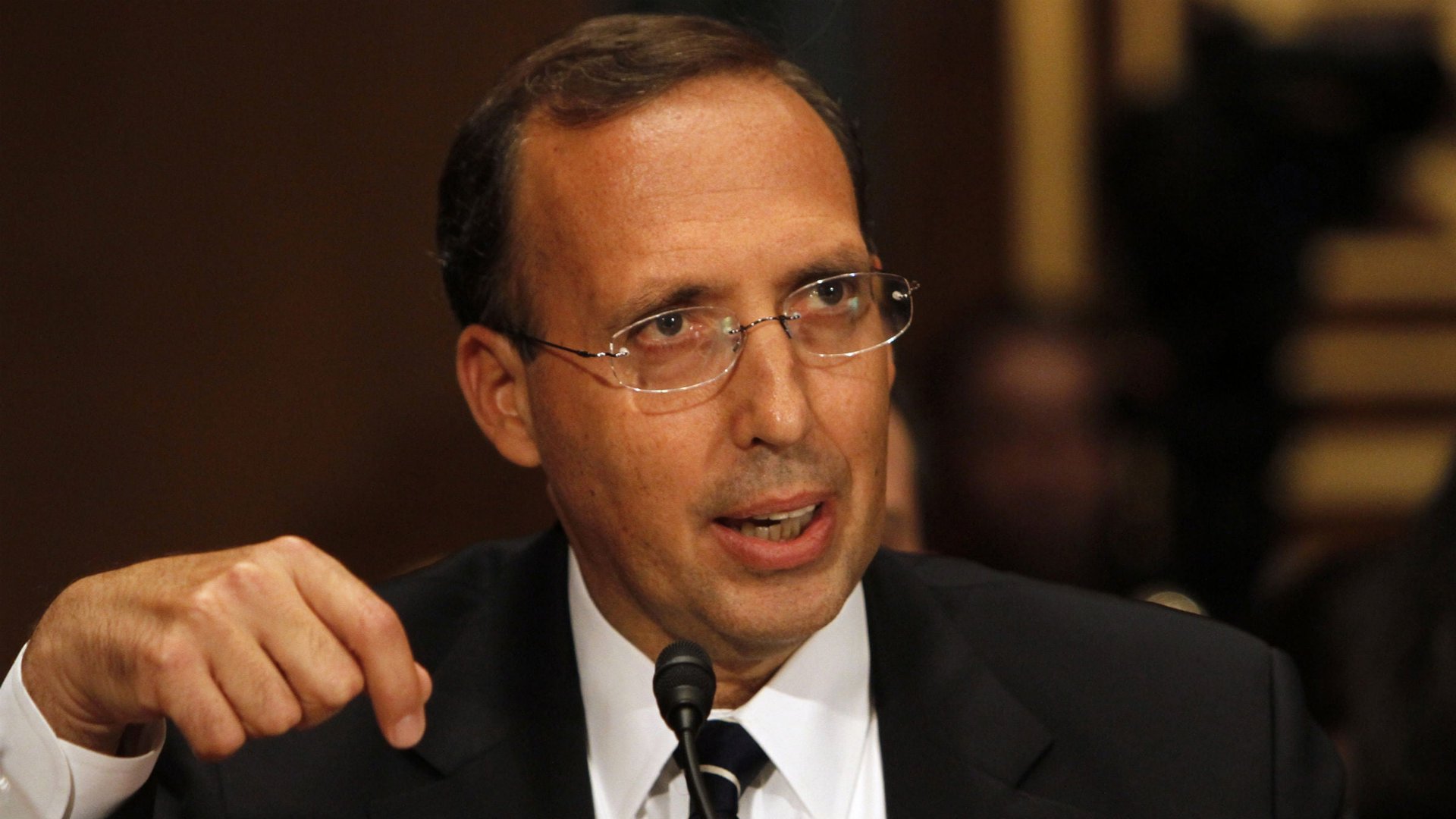AIG: The top 5 moments of mind-melting chutzpah
Congratulations, AIG. We really didn’t think it could be done.


Congratulations, AIG. We really didn’t think it could be done.
But this week’s astounding New York Times report that American International Group is weighing whether to join a lawsuit against the US government really takes the cake. (The suit, by deposed former AIG CEO Maurice Greenberg on behalf of shareholders, alleges that the terms of the bailout were unfairly onerous and wiped billions off the value of the company’s stock.) We think it has become the number one exhibit of unmitigated gall ever demonstrated by AIG. And that, dear Quartzies, is saying something.
As a refresher course, we’ve compiled what we think are the top five moments of AIG temerity.
HEALTH WARNING: US taxpayers should take blood-pressure medication before reading.
5. The man who sank AIG telling America that it would have been much better off if he stayed at AIG.
Joseph Cassano (pictured above) was head of AIG Financial Products, the London-based division that sank the insurance giant by writing credit-default swaps (CDS)—insurance-like products—on mountains of subprime mortgage debt. In June 2010, he told the Financial Crisis Inquiry Commission how, if he had been allowed to stay around at AIG FP, the US taxpayer would have benefitted greatly from his expertise at running the unit that nearly destroyed the economy. “I think I would have negotiated a much better deal for the Taxpayers than what the Taxpayers got. And I think I would have negotiated an appreciably better deal,” he said. As irritating as this statement is, it’s perhaps even more annoying that it’s likely true. For example, the US paid out 100 cents on the dollar to the entities that AIG owed money to on those CDS contracts.
4. CEO Bob Benmosche and his Croatian villa
Current CEO Bob Benmosche was tapped to take over the politically sensitive job of righting the AIG ship in the summer of 2009. So what was his first public appearance of note? Dutifully getting to work? Of course not! After making a few brief appearances in the US, he promptly returned to his palatial seaside estate in Croatia for the Zinfandel harvest. New York Magazine recounts:
He’d informed Treasury when he’d taken the job that he needed to be in Croatia for two weeks in August, for the celebration accompanying the inaugural reaping of his vines. But they were not prepared for the image of Benmosche that flashed on their screens two weeks after he’d been hired to run one of the most troubled companies in the Troubled Asset Relief Program, showing off his villa while a British-accented voice-over noted its “palatial” proportions and queried, in serious-sounding tones, whether the CEO should be so overtly relaxed.
“I mean, I had just hired this guy,” Millstein says now, choking back the slightly hysterical laugh that tends to bubble out of him when he talks about Benmosche. “And there he is, in his shorts and his polo shirt. It was just …” he trails off. “You couldn’t make it up.”
3. The $47 million severance package
In July 2008, AIG attempted to fork over a $47 million severance package to Martin Sullivan, who presided as CEO of AIG as it made preparations to go into the abyss. It was on Mr. Sullivan’s watch that the mortgage bonds insured by AIG’s London-based financial-products office went from being 2% subprime to 95% subprime, according to Michael Lewis. After striking a deal with the New York attorney-general’s office, AIG froze payments on executive payouts, including some $19 million for Sullivan.
2. The post-bailout bonuses for AIG financial products
Before today’s story broke this had to be the out-and-out pinnacle of AIG effrontery. It’s hard to remember how bleak the national mood was in March 2009. The stock market was essentially at its post-crisis lows. The economy vaporized nearly 800,000 jobs that month; unemployment was skyrocketing. So when word broke that AIG had paid $165 million in retention bonuses to employees of AIG’s Financial Products division—the division that prompted the implosion of the company—people went nuts.
Senator Chuck Grassley—an Iowa Republican not known for flying off the handle—suggested that AIG executives “either resign or go commit suicide.” Activists picketed homes of AIG FP executives in suburban Connecticut. The Treasury Department’s hand-picked AIG CEO was hauled before Congress for a public browbeating. At one point in his testimony he read aloud threats that AIG employees had received, including suggesting those who got bonuses be”executed with piano wire around their necks.” The House of Representatives passed a bill that would have imposed 90% taxes on Wall Street bonuses as a result of the controversy. But it never went anywhere in the Senate.
1. Today’s outrage, on which we recommend the write-ups by HuffPo’s Mark Gongloff (a phone-slamming former colleague of mine and keen identifier of affronts to common decency) and, of course, our own Gywnn Guilford.